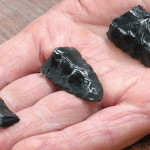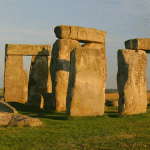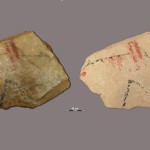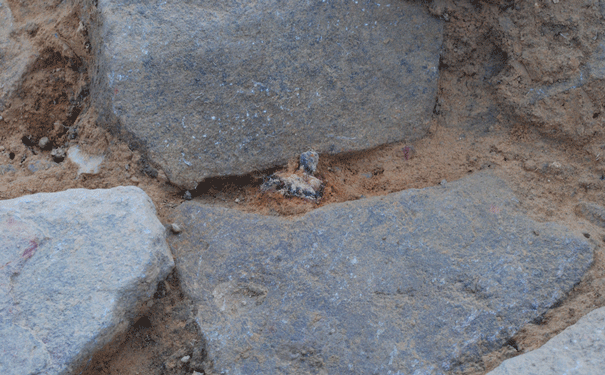
A shoe nail between the gateway paving stones. Photo/©: Sabine Hornung, Arno Braun
It wasn’t only Asterix who resisted the Roman conquest of Gaul.
In the late 50s BC the Treveri, a local tribe who lived in the mountainous regions between the Rhine and Maas rivers, were split into pro- and anti-Roman factions, according to Julius Caesar’s Commentarri de Bello Gallico. The anti-Roman faction, led by Indutiomarus and his relatives, caused civil unrest that resulted in the Roman reprisals of 54/53 and 51 BC.
There may now be archaeological evidence for this dramatic episode in history — scientists from Johannes Gutenberg University Mainz in Germany confirmed the location of the oldest Roman military fortification ever found in that country. Located near Hermeskeil, the encampment was built in the late 50s BC, during the Gallic Wars.
“For the first time we seem [to] have actually discovered archaeological evidence of Caesar’s campaign against the Celtic tribe of the Treveri,” says Dr Sabine Hornung, who led the study published in Archäologisches Korrespondenzblatt. “There has been an ongoing discussion where to locate the events described by Caesar.”
She and her team found numerous shoe nails from Roman sandals during their excavation in between the paving stones of one of the camp’s gates. The nails allowed them to date when the fortress would have been constructed, which was confirmed by shards of earthenware vessels found nearby.
A nearby Celtic settlement also helped to confirm the Roman camp’s purpose. “The [Roman] site has been known since the 19th century, since some remains are preserved to day,” Hornung explains. “Then there have also been speculations about this being a Roman military camp, but there was no proof.”
The Celtic settlement, known as Hunnenring (Circle of the Huns), is believed to have been one of the major centres of the Treveri and is located just five kilometres from the Roman camp. There are no signs of destruction; it seems to have simply been abandoned by its inhabitants around the middle of the first century BC, according to Hornung and her team.
“When considering that the military camp at Hermeskeil was built in view of a fortified Celtic settlement it is possible, or rather probable, that the Romans were trying to get control over the Celts by ensuring the decline of an important social and economic centre,” she says.
The Romans would have been able to see Hunnenring clearly from their stronghold, which measured 260,000 square metres and would have been able to house several thousand legionaries and mounted auxiliaries. There is also evidence that it was fortified with an earth wall and a ditch, and encompassed a spring that would have provided the troops with an extra water supply. All in all, it would have been a perfect spot to crush the resistance.
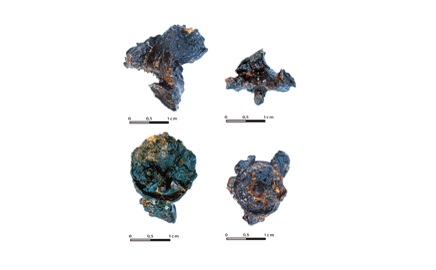
The pattern of a cross with four studs that can be seen on the underside of the nails is fairly typical for the late Republic. Photo/©: Sabine Hornung, Arno Braun


